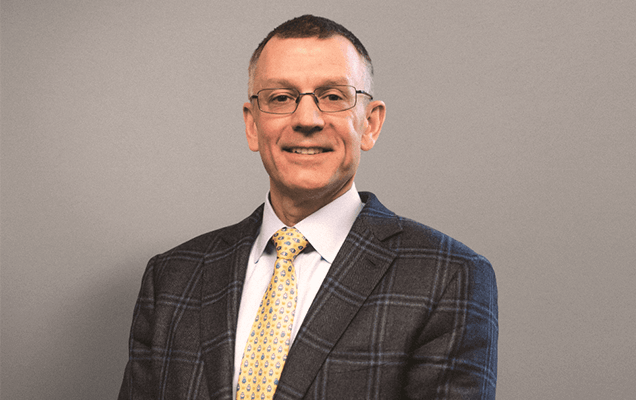ACDF Surgery Explained: Relief for Neck Pain & Spinal Issues
What is ACDF Surgery?
Anterior cervical discectomy and fusion (ACDF) is a surgical procedure aimed at alleviating symptoms related to degenerative changes of the neck.
This surgical intervention is often recommended by spine surgeons when conservative treatments have failed to provide relief.
In this article we will explore the details of ACDF surgery, its purpose, how the procedure is performed, and the recovery process.
Cervical Spine and Intervertebral Discs:
The cervical spine is the part of your spine located in the neck region. Between each pair of vertebrae in the cervical spine, there is an intervertebral disc.
These discs act as cushions, absorbing shock and allowing for smooth movement of the spine. Over time, these discs can degenerate, becoming damaged and lead to the development of bone spurs.
These changes compromise the mechanical strength of the neck and/or place pressure on the spinal cord and nerves. Potential symptoms include neck or arm pain as well as numbness and weakness of the extremities.
Purpose of ACDF Surgery:
Cervical discectomy surgery aims to alleviate symptoms due to a damaged or herniated disc or bone spur and restore stability to the spine. The procedure involves removing the damaged disc material and, in some cases, adjacent soft tissue.
Anterior Cervical Discectomy and Fusion (ACDF) Procedure
Surgical Approach:
During an ACDF procedure, spine surgeons access the cervical spine from the front of the neck. This anterior approach allows for direct access to the cervical disc without disturbing the spinal cord or nerve roots located behind the disc.
Disc Removal:
The damaged disc and/or bone spurs are carefully removed, relieving pressure on the spinal cord and nerve roots. This step is known as the “discectomy.”
Spinal Fusion:
After the discectomy, a bone graft is often placed in the empty disc space and secured with a metal plate and screws. This promotes spinal fusion, a process where the adjacent vertebrae eventually heal together. Spinal fusion provides stability and helps prevent future issues at the site of the damaged disc.
Risks and Considerations:
While ACDF is generally considered a safe procedure, as with any surgery, there are potential risks and complications. These risks can include:
- Infection
- Bleeding
- Reactions to anesthesia
Additionally, there’s a risk of nonunion, where the bone graft doesn’t fully fuse. It’s essential to discuss these risks thoroughly with your surgeon before the procedure.
Long-Term Benefits:
Cervical discectomy and fusion (ACDF) surgery can offer long-term benefits by relieving pain and preventing further damage to the spinal cord and nerves.
Many patients experience a significant improvement in their quality of life, enabling them to engage in activities they may have had to limit due to symptoms that existed prior to surgery.
Let's build your treatment
path, together.
Long-Term Benefits:
Cervical discectomy and fusion (ACDF) surgery can offer long-term benefits by relieving pain and preventing further damage to the spinal cord and nerves.
Many patients experience a significant improvement in their quality of life, enabling them to engage in activities they may have had to limit due to symptoms that existed prior to surgery.
The Recovery Process
Recovery Expectations:
It’s important to have realistic expectations regarding recovery following ACDF surgery. While many patients experience significant pain relief and improved neck function, the full recovery process can take several weeks to months. The bone graft used in the fusion process needs time to solidify and create a stable bridge between the vertebrae. During this period, patients should follow their surgeon’s guidance closely and attend all recommended follow-up appointments.
Follow-Up Care:
After surgery, regular follow-up visits with your healthcare provider are crucial. These visits allow your surgeon to monitor your progress, evaluate the fusion’s success, and address any concerns or complications promptly. Additionally, X-rays or other imaging may be performed to assess the healing process.
Rehabilitation and Lifestyle Adjustments:
An integral part of the recovery journey after ACDF surgery involves rehabilitation. Physical therapy often commences a few weeks post-surgery, helping patients regain strength and flexibility in their neck and shoulders. These exercises are crucial for promoting healing and reducing the risk of future neck problems.
Lifestyle adjustments may also be recommended by your healthcare provider. These can include ergonomic changes at work, adopting a neck-friendly sleep posture, and incorporating neck-strengthening exercises into your daily routine. Making these changes can support the long-term success of the surgery and contribute to overall spinal health.
Conclusion
Cervical discectomy surgery, or anterior cervical discectomy and fusion (ACDF), is an effective surgical procedure that can provide significant relief from symptoms caused by a damaged disc and/or bone spur in the cervical spine.
This procedure is associated with minimal risks when performed by an experienced spine surgeon.
With proper post-operative care, most patients can experience a dramatic improvement in their quality of life and expect a return to the activities they enjoy.
If you have been diagnosed with a cervical spine condition or are considering surgery, contact Neurosurgeons of New Jersey to coordinate a consultation with one of the experienced spine specialists.
Our team of nationally recognized surgeons has the expertise to discuss your specific condition to determine if an ACDF is the right choice for you.

About Dr. Michael G. Kaiser
Dr. Michael G. Kaiser is a nationally recognized neurosurgeon in North Jersey and is a proud member of Neurosurgeons of New Jersey, practicing out of their Ridgewood office conveniently located on East Ridgewood Avenue. Dr. Kaiser specializes in complex and minimally invasive spine surgeries.
Recent Posts:






